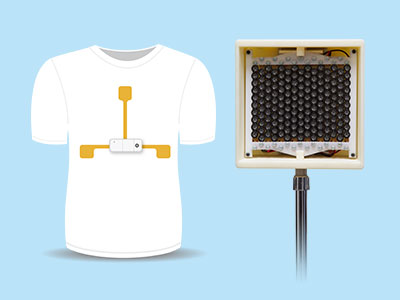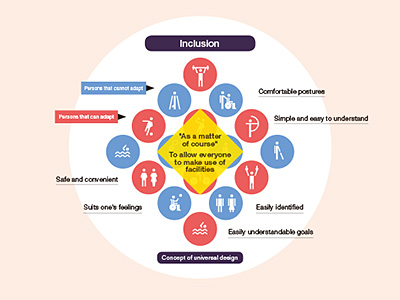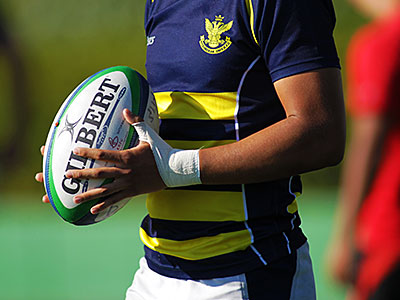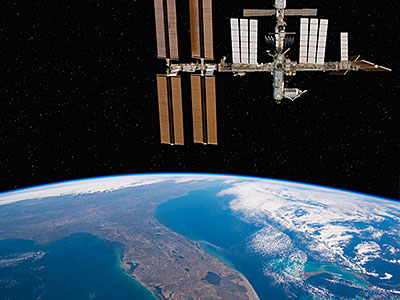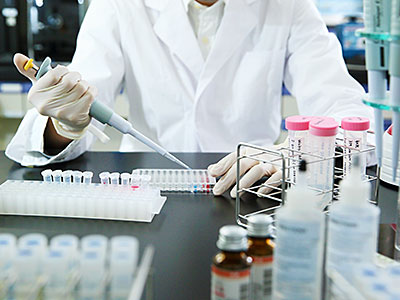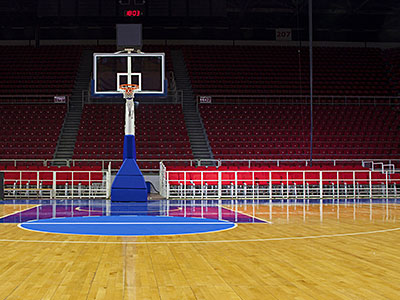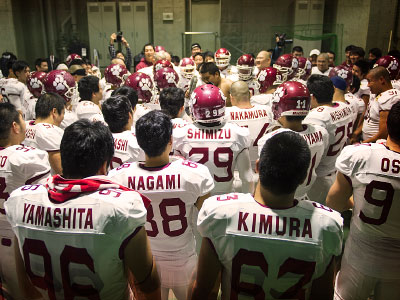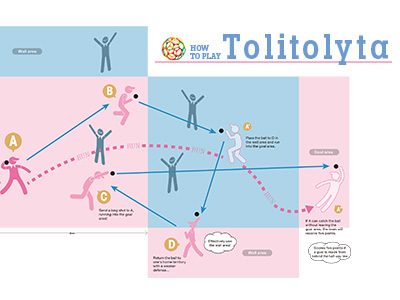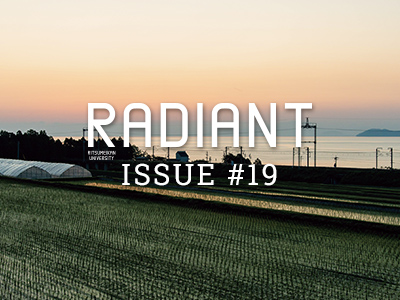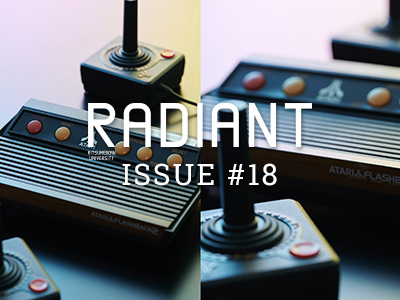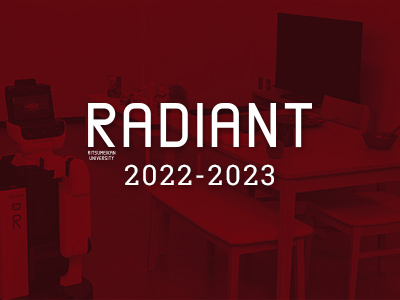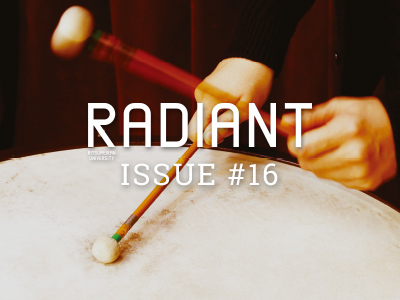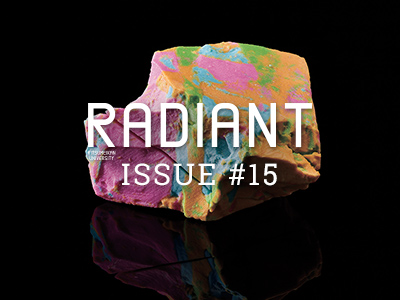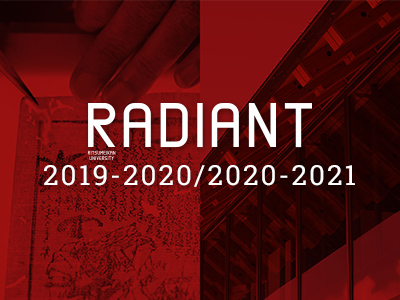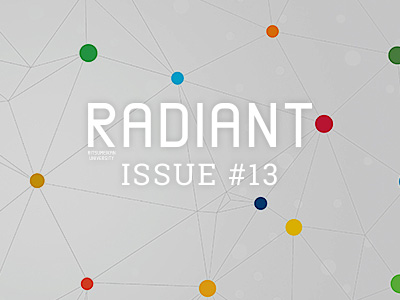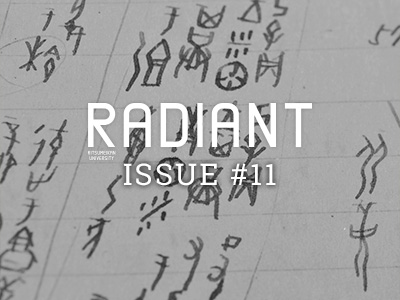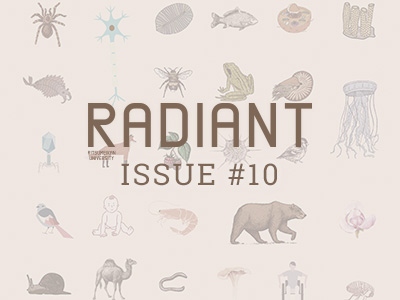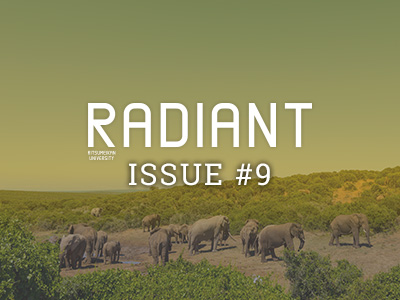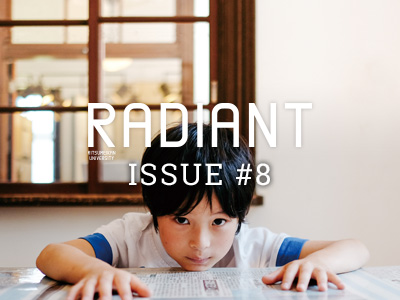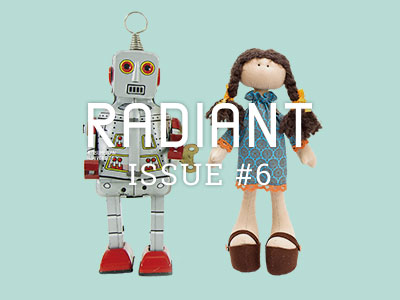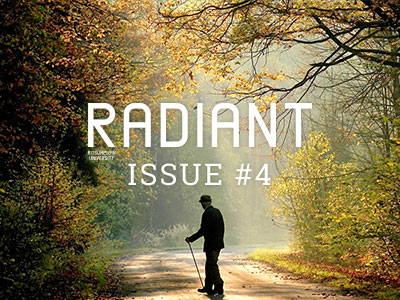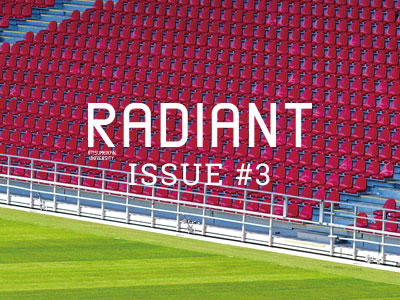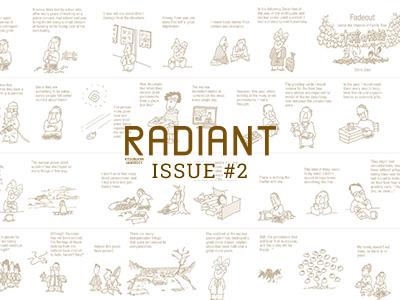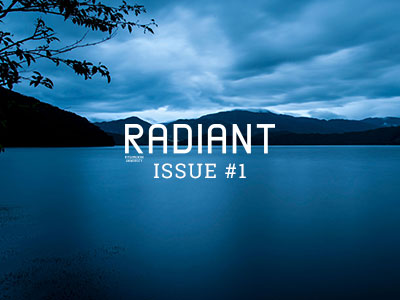STORY #1
A future where exercise
is a part of everyday life,
created by advanced
technologies
Tadao Isaka
Professor, College of Sport and Health Science
Takanobu Nishiura
Professor, College of Information Science and Engineering
Naruhiro Shiozawa
Associate Professor, College of Sport and Health Science

Only you can hear things from under the "audible-sound spotlight"; creating multiple sound domains in a single space.
At the same time, Takanobu Nishiura is trying to create a "Space that makes people want to exercise" using acoustics. He is developing an ultrasound directional loudspeaker.
Nishiura explains, "Sound waves travel differently (directivity) depending on the frequencies. According to him, when the frequency is low, sound generally travels concentrically (omni-directional), while a higher frequency travels straight. In other words, the lower the frequency is, the wider the sound travels, while the higher the frequency is, the straighter the sound travels at an acute angle. However, ultrasound waves with high frequencies cannot be detected by human ears. For this reason, Nishiura successfully generated a sound that is audible to human ears that has directivity like an ultrasound sound wave by modulating and emitting music and audio within an audible range and by demodulating it in the atmosphere. By controlling the directivity of sound, it has become possible to create a sound space that can be heard only in a specific direction and at a specific range.
Furthermore, Nishiura designed a curved loudspeaker surface and developed a parametric loudspeaker that can freely control the direction and range in which sound travels by automatically controlling the curvature. The "audio spot" using this loudspeaker transmits the sound within a limited direction and range, much like a spotlight, making it possible to create completely different sound domains in a single space. "Even when we generate multiple sounds in a space, if the sound domains are different, one cannot hear other sound domains. For example, elderly people, youths, and children can share the same space, while receiving audio exercise instructions that are suitable for each group," Nishiura explains. They have conducted many demonstration tests, confirming the possibilities of contributing to exercise promotion. At a new gymnasium at Ritsumeikan University Biwako-Kusatsu Campus, which is due to be completed in the fall of 2016, these ultrasound loudspeakers will be installed to realize space-sharing via sound. "We want to eliminate any spaces where exercise will be inhibited by sound," says Nishiura, looking further into the future.
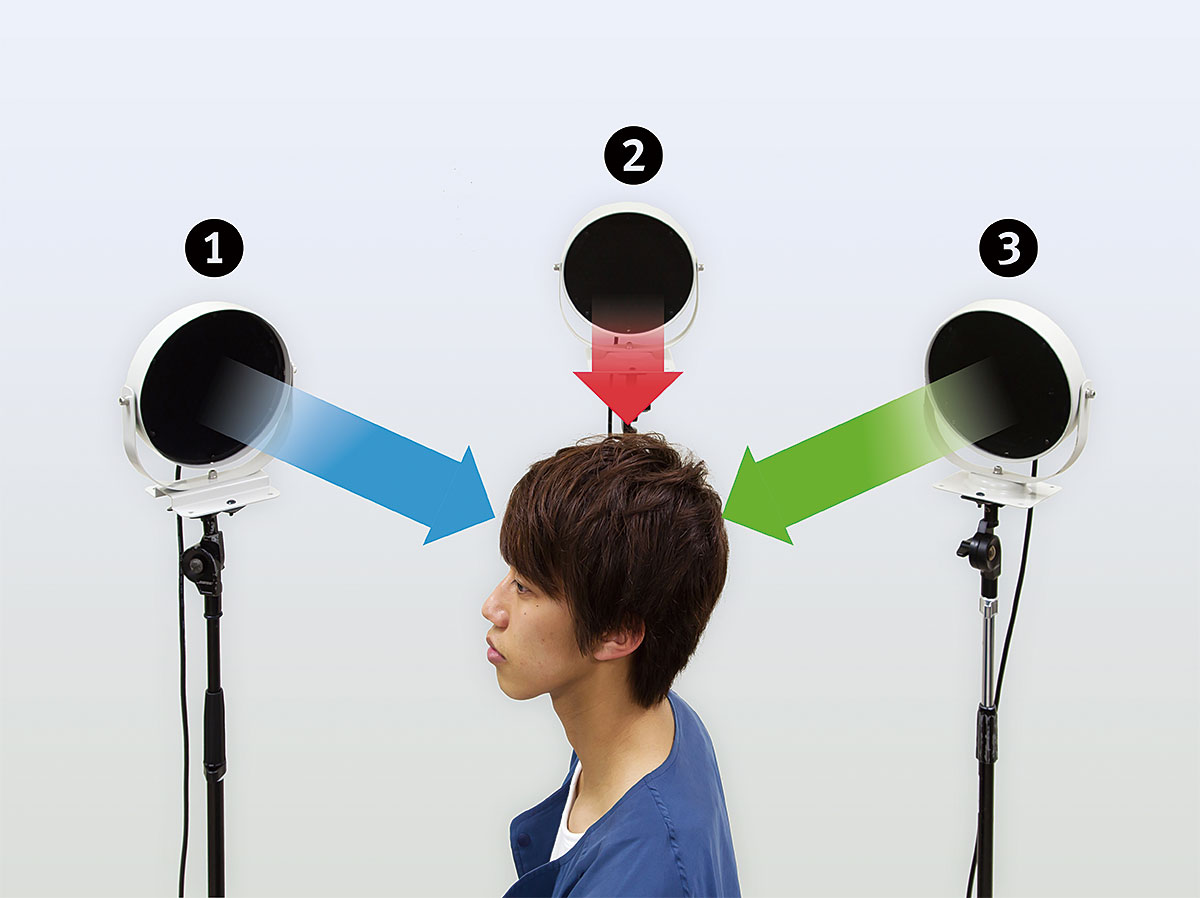
Audio spot for minimum domain: Amplitude modulated waves are separated, and three loudspeakers emit a sideband wave 1, a carrier wave, and sideband wave 2. These are demodulated at the single point where they intersect to become an audible sound.
A flexible ultrasound loudspeaker is combined with an electric-driven panning head to automatically control the direction of emission. Based on the number of users and the range of use, the playback area is automatically controlled.
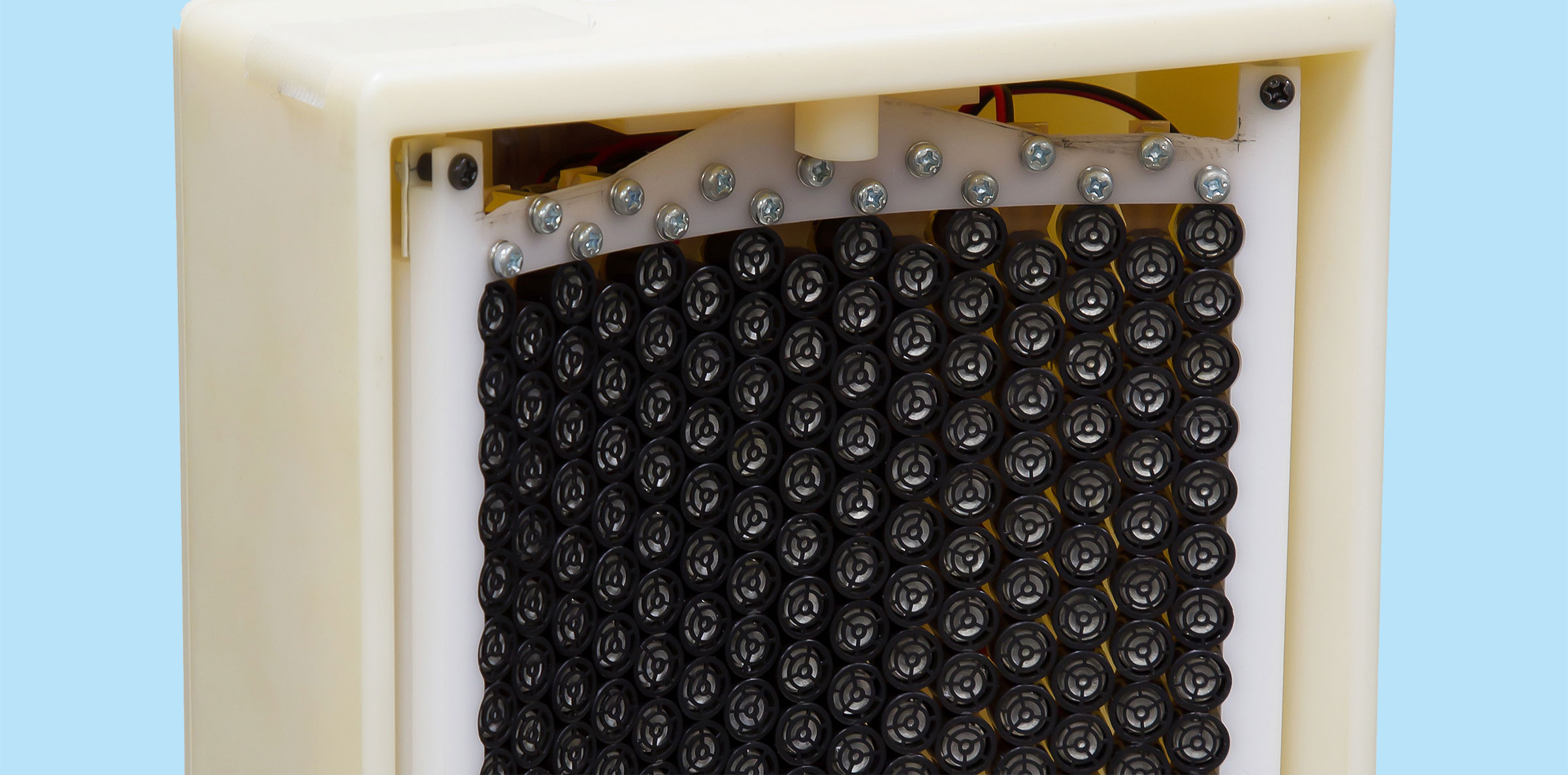
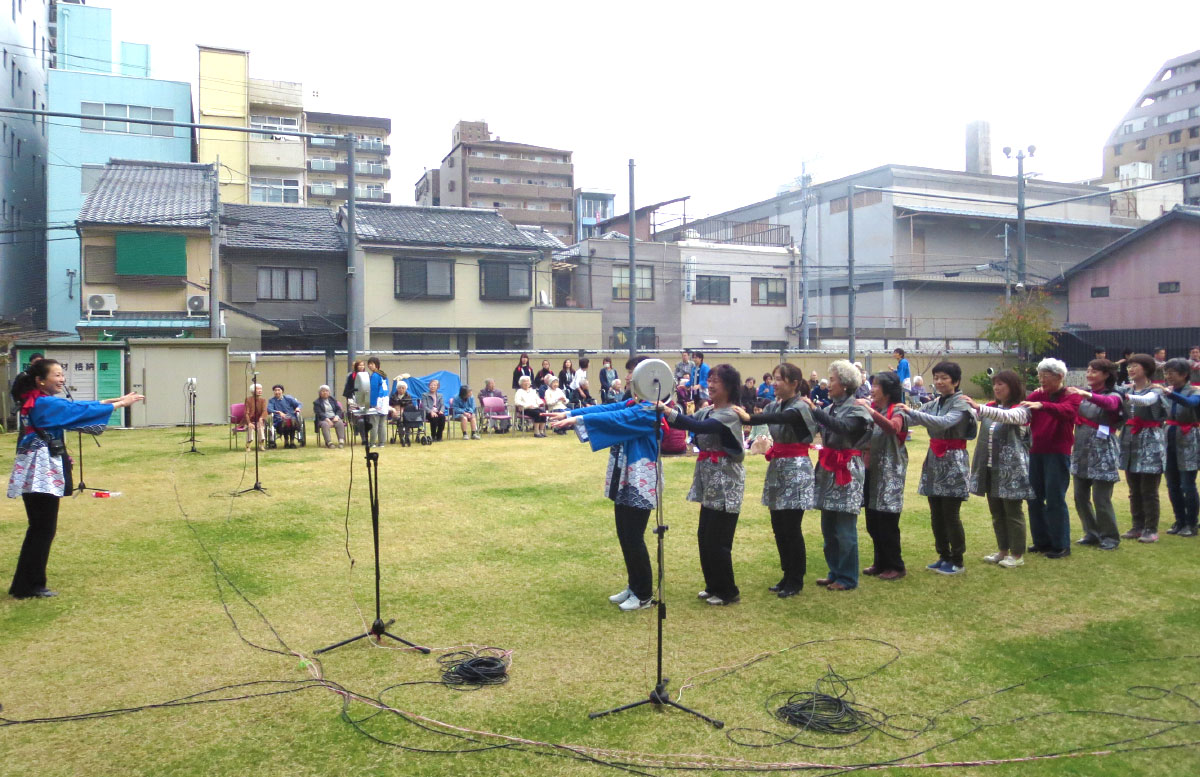
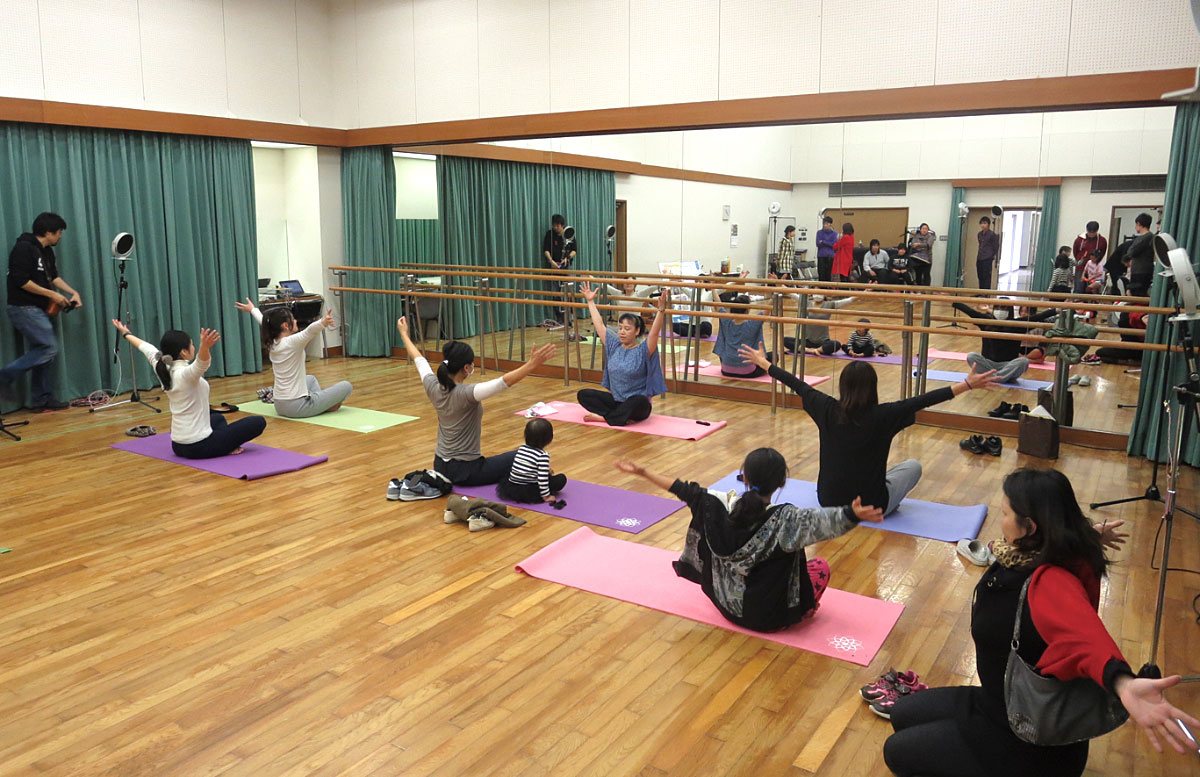
Space-sharing using ultrasound loudspeakers: Each group hears a different sound so as to receive exercise instructions suitable for them.
Shiozawa says that, while discussing the development going forward, "Toward full-scale commercialization, our next step is to meet the standard as a clothing item." Currently, they are tackling the challenge of performance improvement as a product, such as strength. At the same time, they are also proceeding with implementing sensors to measure other inputs, such as perspiration and body temperature. They also "Have an idea to implement ultrasound loudspeakers in smartwear." The idea is to mount ultrasound loudspeakers on the shoulder of smartwear to send audio information to the ears, so as to promote exercise. Though some technological issues still remain, realization is said to be in the not-so-distant future.
Nishiura is also developing an "audio spot for minimum domain" to reproduce sound in a minimum domain of a space by further exploring audio spot technology. By separating amplitude modulated waves and emitting each separated amplitude modulated wave from multiple directions using parametric loudspeakers, audible sound is demodulated only at a point where these waves intersect. If commercialized, it will become possible to let adults and children of different heights listen to different audio guides while in front of a painting at a museum, for example, or play back different sounds without interference in a driver's seat, passenger's seat, or back seat of a vehicle.
Isaka expresses his enthusiasm by saying, "The point is that by the year 2021, to what extent will research results be able to be implemented in society? The real challenges are yet to come." What kind of exercise space will become a reality? It is very exciting to think about what will happen in 10 years’ time.
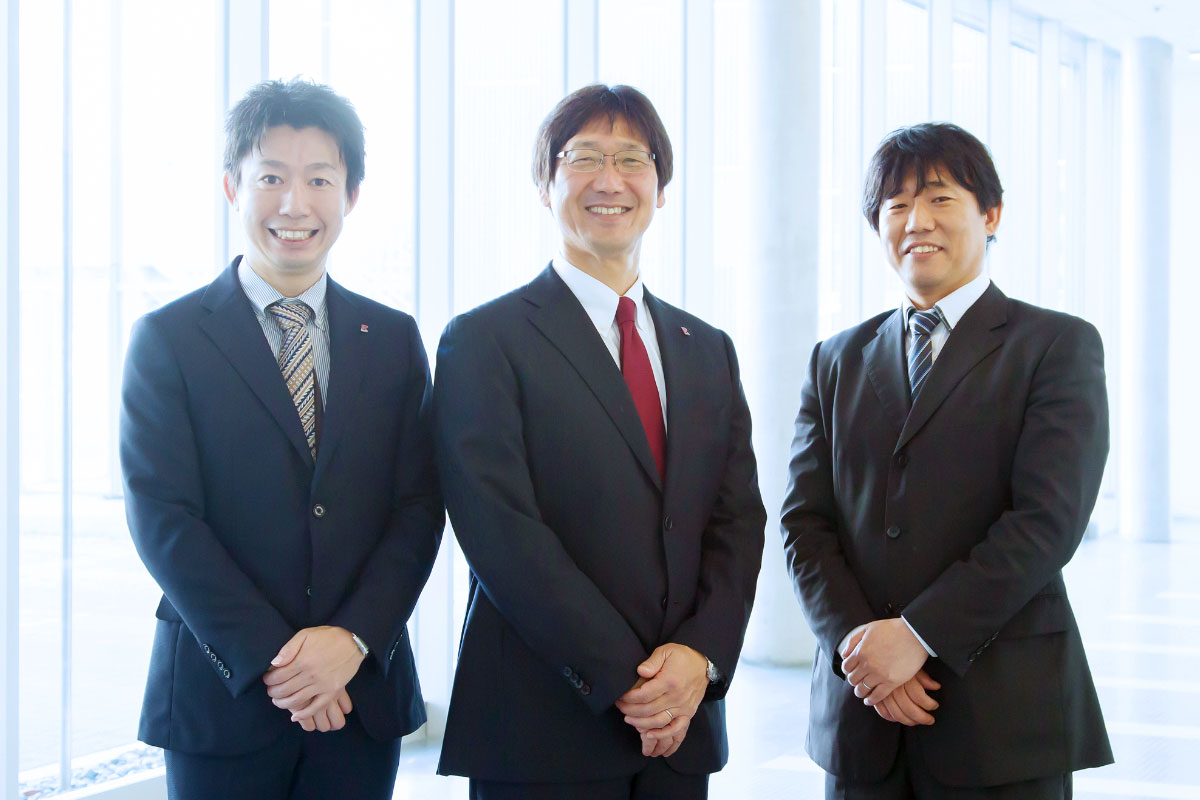
Takanobu Nishiura [Left]
Professor, College of Information Science and Engineering
Subject of Research: Research into analysis, understanding, reproduction, and synthesis of acoustic sound environments
Research Keywords: Intelligent Informatics, Media Informatics/Databases
Tadao Isaka [Center]
Professor, College of Sport and Health Science
Subject of Research: Study of muscle strength and power of human performance, evaluation of joint torque demonstrated in daily behavior and at work, kinematic and dynamic analysis of behavior in sports
Research Keyword: Sports Science
Naruhiro Shiozawa [Right]
Associate Professor, College of Sport and Health Science
Subject of Research: Biosignal instrumentation non-restrictive measurement
Research Keywords: Biomedical Engineering, Sports Science
